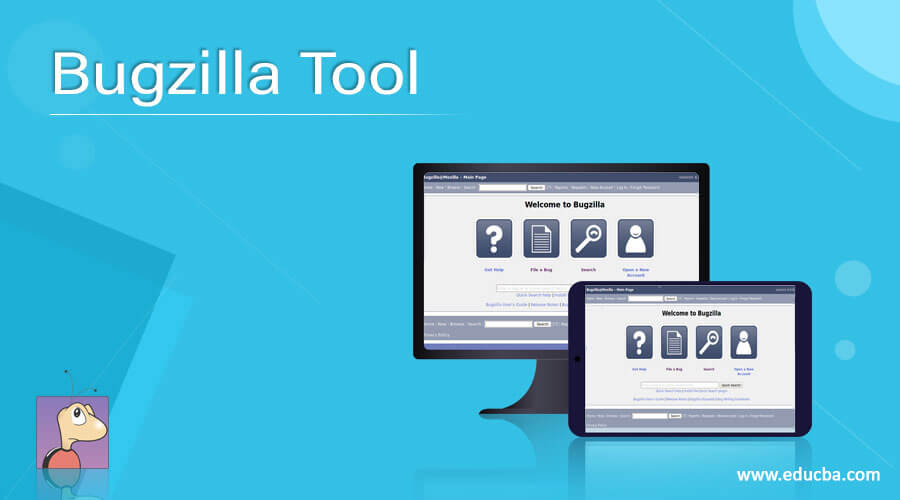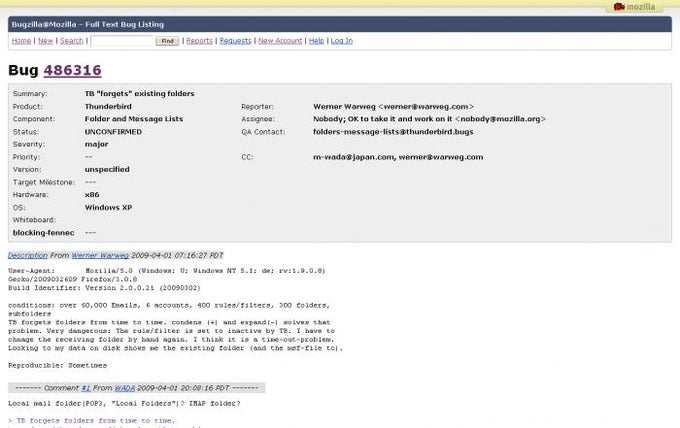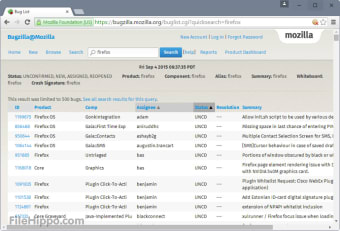
Now, when the modules are installed, the next message that you should receive is that there is an error with the database connection: There was an error connecting to MySQL:Īccess denied for user might have several reasons:

Once, the required modules are installed you need to check the setup again. usr/bin/perl ExtUtils::PkgConfig module
#Bugzilla reviews install
***Įxecute the commands below to install the required modules: /usr/bin/perl DateTime To attempt an automatic install of every required and optional module If the setup, fails due to some missing Perl modules, you should receive the following output: COMMANDS TO INSTALL REQUIRED MODULES (You *must* run all these commands Once, this is done go into the “bugzilla” directory and check the setup. tar -xvf bugzilla-5.0.6.tar.gz -C /var/www/html/ Once downloaded, extract the bugzilla file.
#Bugzilla reviews download
GRANT ALL PRIVILEGES ON bugzilla.* TO PRIVILEGES īefore we can install Bugzilla we need to download the latest stable version. CREATE USER IDENTIFIED BY 'YourStrongPasswordHere' Next, we need to create a Bugzilla database, the Bugzilla user, and grant the permissions for that user to the database. Loaded: loaded (/lib/systemd/system/rvice enabled vendor preset: enabled)Īctive: active (running) since Sat 13:30:06 UTC 7min ago rvice - MariaDB 10.3.34 database server.You should receive the following output: sudo systemctl status mariadb Start and enable the rvice with the following commands: sudo systemctl start mariadb & sudo systemctl enable mariadbĬheck the status of the rvice sudo systemctl status mariadb To install the MariaDB database server, execute the command below. sudo apt install build-essential libappconfig-perl libdate-calc-perl libtemplate-perl libmime-tools-perl build-essential libdatetime-timezone-perl libdatetime-perl libemail-sender-perl libemail-mime-perl libemail-mime-perl libdbi-perl libdbd-mysql-perl libcgi-pm-perl libmath-random-isaac-perl libmath-random-isaac-xs-perl libapache2-mod-perl2 libapache2-mod-perl2-dev libchart-perl libxml-perl libxml-twig-perl perlmagick libgd-graph-perl libtemplate-plugin-gd-perl libsoap-lite-perl libhtml-scrubber-perl libjson-rpc-perl libdaemon-generic-perl libtheschwartz-perl libtest-taint-perl libauthen-radius-perl libfile-slurp-perl libencode-detect-perl libmodule-build-perl libnet-ldap-perl libfile-which-perl libauthen-sasl-perl libfile-mimeinfo-perl libhtml-formattext-withlinks-perl libgd-dev libmysqlclient-dev graphviz sphinx-common rst2pdf libemail-address-perl libemail-reply-perl Since Bugzilla is written in Perl programming language, we need to install it along with the dependencies. Loaded: loaded (/lib/systemd/system/rvice enabled vendor preset: enabled)Īctive: active (running) since Sat 12:35:15 UTC 36min ago

You should receive the following output: sudo systemctl status apache2 To check if everything is OK, execute the following command for the status of the Apache2 service: sudo systemctl status apache2 To install it execute the command below: sudo apt install apache2Īfter successfull installation, start and enable the service sudo systemctl start apache2 & sudo systemctl enable apache2 We are going to use Apache as a web server in this tutorial.
#Bugzilla reviews update
Since we have a fresh installation of Ubuntu 20.04, we need to update the packages to the latest versions available: sudo apt update -y & sudo apt upgrade -y Step 2.




 0 kommentar(er)
0 kommentar(er)
